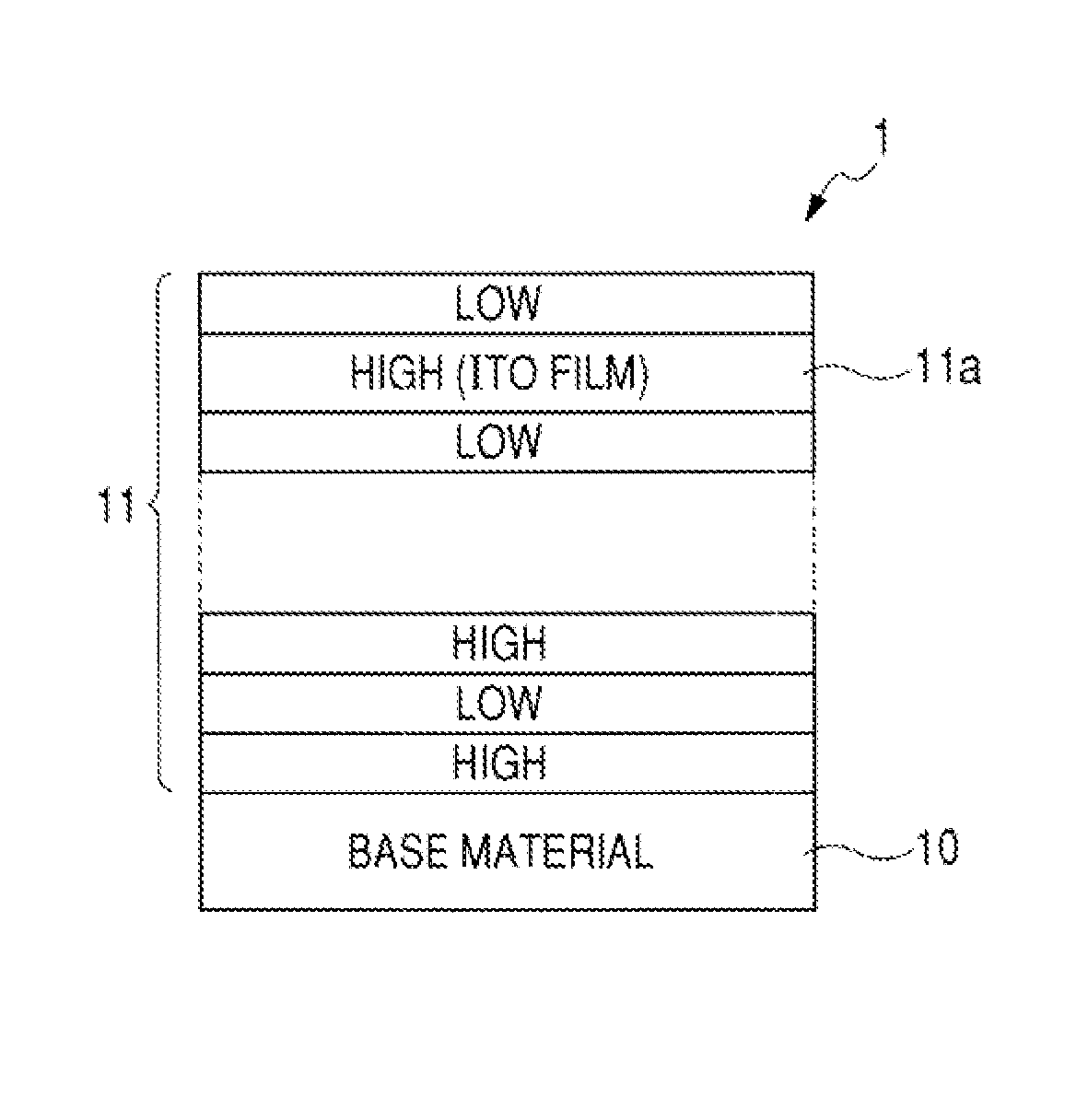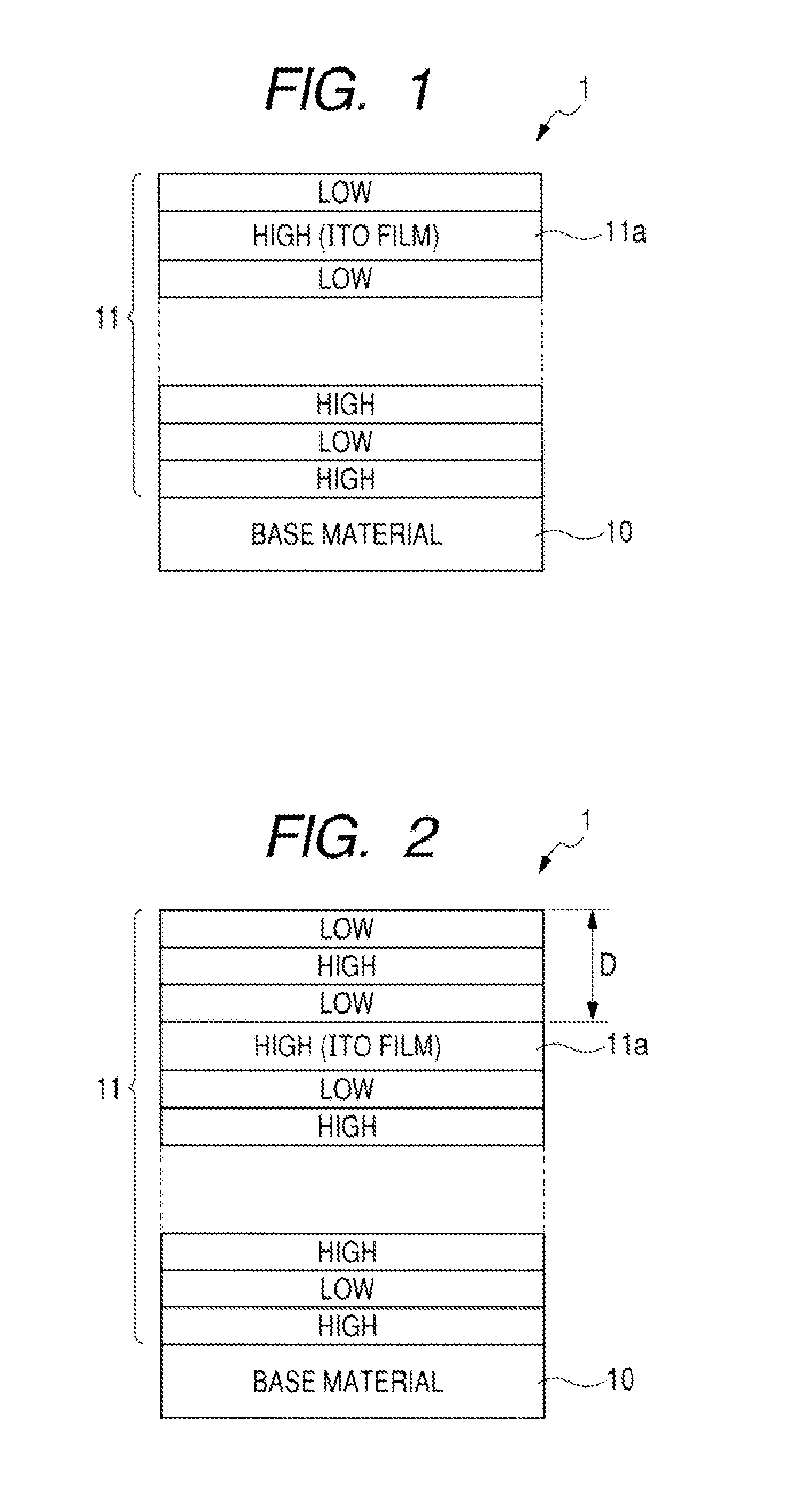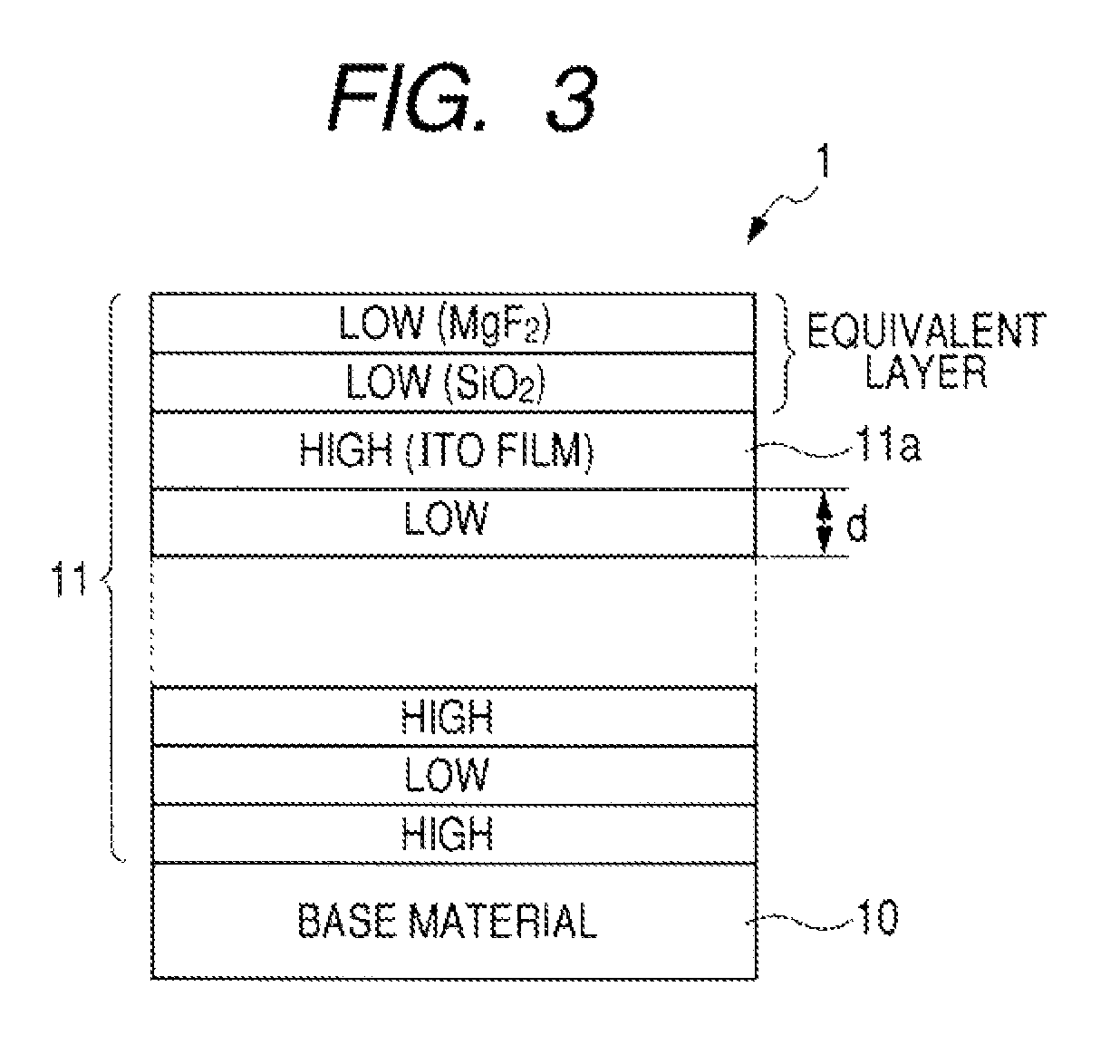Optical low-pass filter
a filter and optical technology, applied in the field of optical low-pass filters, can solve the problems of reducing the light amount of radiation to the object entering the imaging device, capturing the shadows of dirt and dust, and preventing the attachment of dirt, etc., to achieve satisfactory conductivity, suppress the cost, and prevent the effect of dirt attachmen
- Summary
- Abstract
- Description
- Claims
- Application Information
AI Technical Summary
Benefits of technology
Problems solved by technology
Method used
Image
Examples
Embodiment Construction
[0041]In the below, an embodiment of the invention is described by referring to the accompanying drawings. Note here that the invention is not at all restrictive to such an embodiment.
[0042]FIG. 1 is a schematic diagram showing an embodiment of a low-pass filter in the invention. A low-pass filter 1 in the drawing includes a coating layer 11 of blocking infrared radiation formed on the surface of a base material 10. The coating layer 11 of blocking the infrared radiation includes a high-refractive layer and a low-refractive layer sequentially disposed alternately on one on the other. One of the high-refractive layers is configured by an ITO (Indium Tin Oxide) film 11a made of a mixture of indium oxide and tin oxide being a transparent conductive material. With such a configuration, the surface of the coating layer is increased in conductivity, and the attachment of dirt and dust due to static buildup can be effectively prevented.
[0043]Among the high-refractive layers configuring the...
PUM
| Property | Measurement | Unit |
|---|---|---|
| thickness | aaaaa | aaaaa |
| thickness | aaaaa | aaaaa |
| thickness | aaaaa | aaaaa |
Abstract
Description
Claims
Application Information
 Login to View More
Login to View More - R&D
- Intellectual Property
- Life Sciences
- Materials
- Tech Scout
- Unparalleled Data Quality
- Higher Quality Content
- 60% Fewer Hallucinations
Browse by: Latest US Patents, China's latest patents, Technical Efficacy Thesaurus, Application Domain, Technology Topic, Popular Technical Reports.
© 2025 PatSnap. All rights reserved.Legal|Privacy policy|Modern Slavery Act Transparency Statement|Sitemap|About US| Contact US: help@patsnap.com



